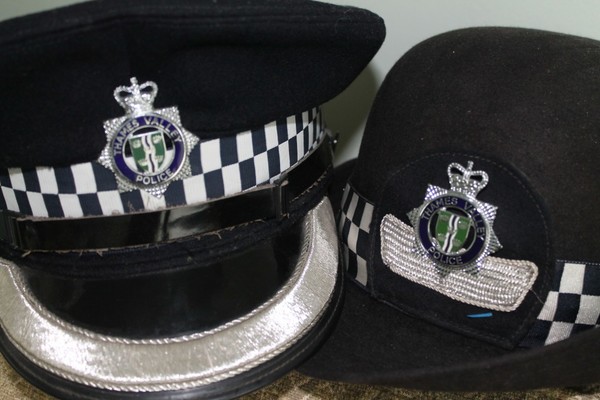A range of advice and resources for leaders can be found here.
You can also read a blog from former PSA President Paul Griffiths on 'Becoming a Superintendent' here.
You can also read a blog from former PSA President Paul Griffiths on 'Becoming a Superintendent' here.

Superintendents' Toolkit
The Superintendents’ Toolkit is part of a range of online leadership resources created by the College of Policing, PSA and partners, to provide easily accessibly information, which officers and staff can access from all force and personal devices, at any time and place.
The toolkit superintendents and chief superintendents in their decision-making process by providing clear guidance on responsibilities, powers and authorities that come with the role. The toolkit also helps newly-promoted or temporarily-promoted superintendents who would like to get a quick understanding of the additional operating powers and procedures.
Workbooks available include ‘stepping up to the superintendent rank’, ‘strategic planning’, leadership and ‘decision making and risk-management’. Officers can also find easy access to up to date legislation and policy documents.
The toolkit was the result of lengthy consultation with the PSA, which was keen to fill the gap in national training provision provided to newly promoted superintendents.
The Superintendents’ Toolkit can be accessed via the College of Policing portal by anyone with a registered account here.
The toolkit superintendents and chief superintendents in their decision-making process by providing clear guidance on responsibilities, powers and authorities that come with the role. The toolkit also helps newly-promoted or temporarily-promoted superintendents who would like to get a quick understanding of the additional operating powers and procedures.
Workbooks available include ‘stepping up to the superintendent rank’, ‘strategic planning’, leadership and ‘decision making and risk-management’. Officers can also find easy access to up to date legislation and policy documents.
The toolkit was the result of lengthy consultation with the PSA, which was keen to fill the gap in national training provision provided to newly promoted superintendents.
The Superintendents’ Toolkit can be accessed via the College of Policing portal by anyone with a registered account here.
Once registered you can download the app onto force or personal device by searching for College Leadership Learning in the app store.
Minimise

Leadership Resources
A range of resources for senior leaders are available via the College of Policing website, this includes information and opportunities on topics such as:
- Reverse mentoring
- Career support workshops
- SLDP personal leadership
Details can be found here
Expand

Ceremonial etiquette
FAQs and advice on ceremonial etiquette
What should I wear to a Service funeral to be attended in uniform?
If attending as a member of the congregation you should wear your tunic with medals and black/brown gloves. You should wear your flat cap, which you should remove when entering the building where the service is to be held, unless it is a Jewish service in which case you should keep your cap on.
Other religious premises may require you to wear particular headgear, which they will normally supply (e.g. a Gurdwara).
If you are part of the guard of honour, you should wear the above, except with white gloves.
If you are outside the building when the coffin arrives, you should smartly salute the coffin as it passes you, or as it arrives at the building. There is no need to hold the salute any more than a few seconds.
What should I wear when invited to a ceremonial service or parade?
You should abide by the ‘Dress of the Day’ instructions. If the ceremony is of a military nature, then the parade marshall, or the person organising the parade would have issued these.
If it is a police service then a similar instruction should be issued. If it has not you may wish to arrange for one to be issued.
As a rule, on ceremonial occasions, when invited as a guest, officers should wear their best uniforms. If this is a tunic then medals and black/brown gloves should be worn.
If outside, and you are wearing headgear, you should salute for the entire period of The National Anthem, and the entire period of the Last Post. You should not salute during any period of silence, or at the Reveille, which comes at the end of the silence.
Meeting members of The Royal Family.
His Majesty The King:
If in uniform, as His Majesty approaches, you should stand to attention and salute. You should then drop the salute. The first time you speak to His Majesty, you should call Him ‘Your Majesty’. e.g. “Good Morning Your Majesty’. In any subsequent conversation, you should call him 'Sir'.
If in plain clothes, men should give a short sharp bow of the head from the neck only. Women should curtsey, which should be a shallow bob. Forms of address are the same.
Members of the Royal Family Holding the title Her/His Royal Highness (HRH)
As for HM The Queen, except the first address should be “Your Royal Highness”, followed by Sir or Ma’am to rhyme with Jam.
Formal dinners:
‘Black tie’ means dinner jackets with a black bow tie for men. Women should wear suitable clothing, which represents the same level of formality. Traditional dress can also be worn.
If medals are to be worn these should be miniature ones. For men these should be on the left jacket lapel, above the line of the breast pocket. For women they should be worn in a suitable position on the left side.
Lounge suits means a suit of matching jacket and trousers. Men should normally wear a tie. Women should wear something, which matches this level of formality.
Expand
